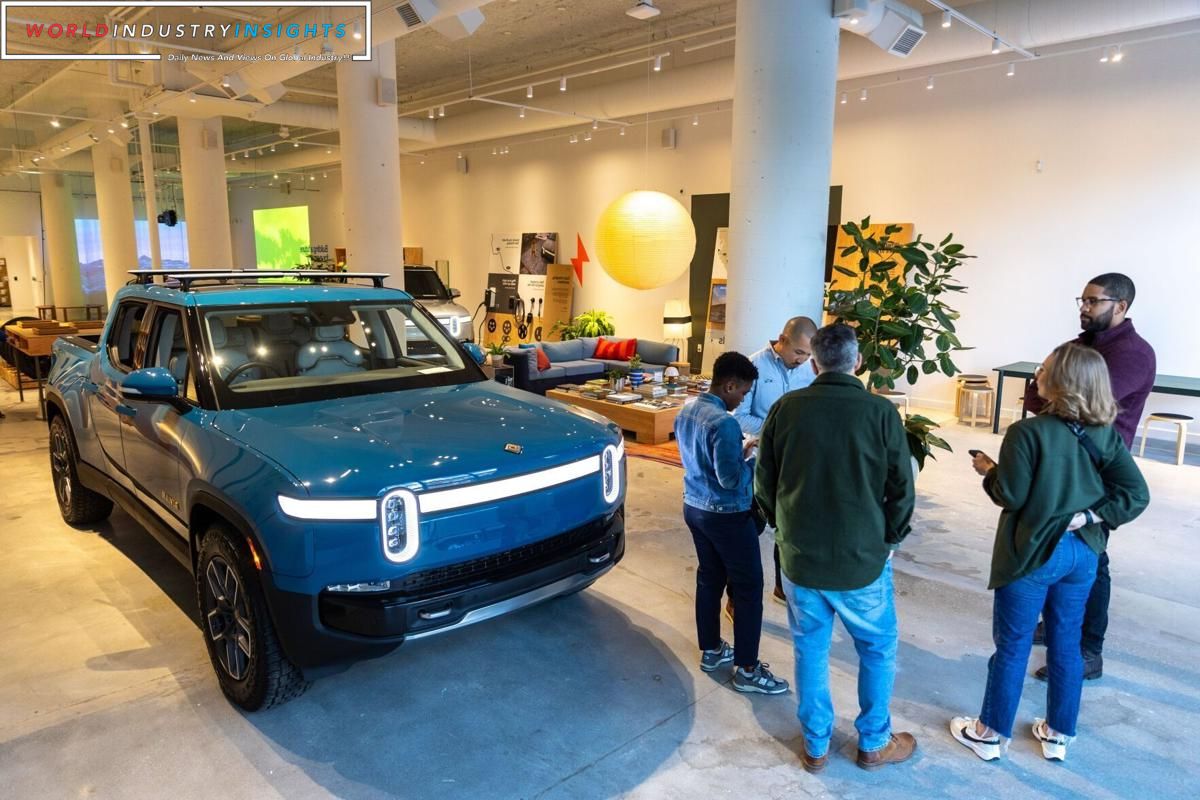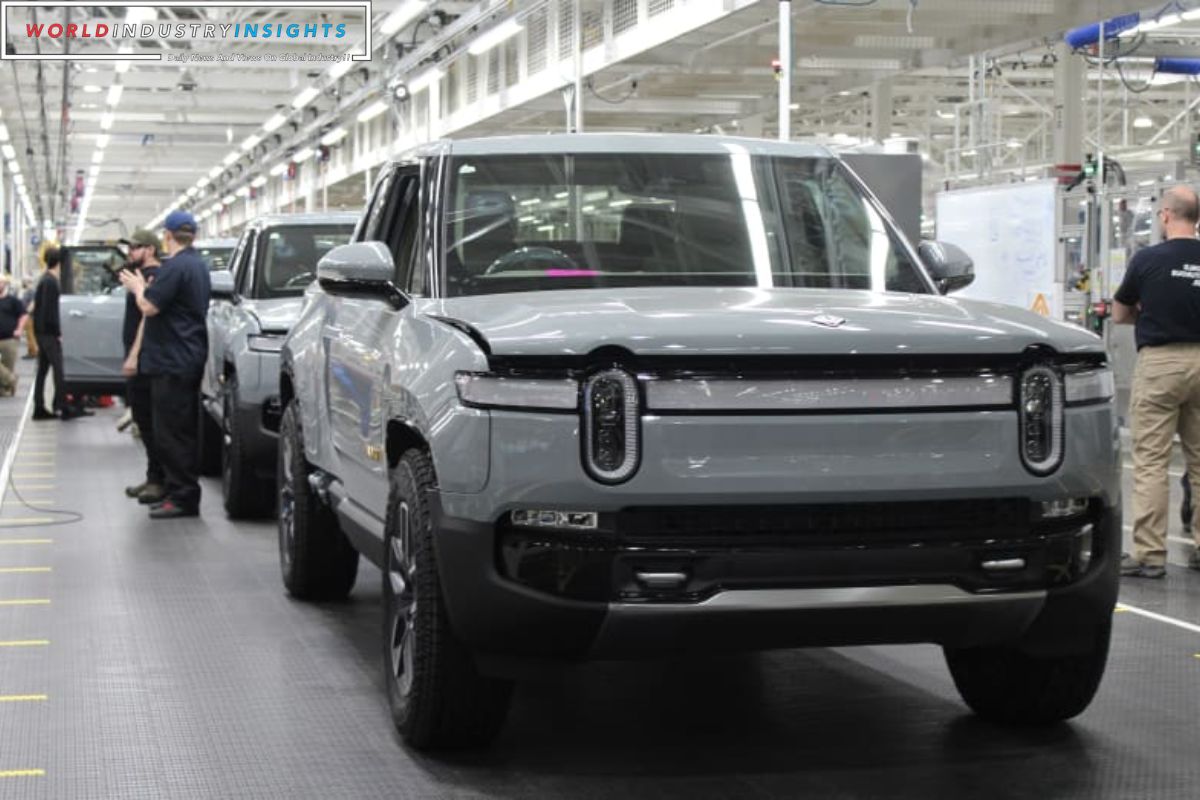Rivian’s Stock Stumbles: Rivian, the highly anticipated electric vehicle (EV) manufacturer, has recently faced a stumble in its stock performance as its quarterly EV deliveries failed to meet estimates. This disappointing outcome has led to an 11% decline in the company’s stock, leaving investors concerned about its future prospects.
While Rivian has made significant progress in the EV market and has even surpassed its 2023 guidance, the shortfall in deliveries raises questions about its ability to keep up with the increasing demand for electric vehicles.
In this article, we will examine the potential reasons behind Rivian’s delivery gap and explore the implications of this setback in the context of a rapidly evolving EV landscape.
Stay tuned to discover the key factors that may impact Rivian’s future success.
Key Takeaways
- Rivian’s stock declines by 11% after failing to meet quarterly delivery estimates
- Potential overproduction raises concerns about supply chain management and accurate demand forecasting
- Rivian’s shares decline by 9.7% due to delivery shortfall in Q4
- Rivian surpasses its 2023 production guidance by manufacturing 57,232 units
Delivery Disappointment: Rivian’s Stock Plummets 11% as Q4 Figures Fall Short
Rivian, the electric vehicle manufacturer, has experienced a significant setback as its stock tumbles 11% following disappointing fourth-quarter delivery figures.
The company fell short of analysts’ projections, delivering 13,972 electric vehicles (EVs) compared to the estimated 14,114. This decline in deliveries highlights the challenges Rivian is facing, including supply-chain issues and a slowdown in the electric vehicle market.
Also Read: Rivian Boosts Production Outlook as Demand Surges, While Lucid Cuts Forecasts
The 11% drop in stock value marks the largest decline Rivian has experienced in almost three months, indicating investor concern over the company’s ability to meet demand and navigate production challenges.
Rivian’s failure to meet delivery targets not only affects its financial performance but also raises questions about its operational efficiency and long-term viability in a highly competitive industry.
As the electric vehicle market continues to evolve, Rivian must address these issues promptly to regain investor confidence and sustain its growth trajectory.
Potential Overproduction Signals Caution on Rivian’s Future
The potential for overproduction in Rivian’s quarterly figures serves as a cautionary signal for the company’s future prospects. Analysts have highlighted the risk of weakened demand in the expanding electric vehicle (EV) market, suggesting that Rivian may have produced more vehicles than it was able to deliver.
While it is important not to overinterpret the gap between production and deliveries, this potential overproduction raises concerns about the company’s ability to effectively manage its supply chain and accurately forecast customer demand.
Furthermore, Rivian’s long-term challenges are underscored by the fact that it may not achieve cash-flow breakeven until 2026. This highlights the need for strategic adjustments and a careful assessment of market demand to ensure sustained growth and profitability in the competitive EV industry.
Amidst concerns over potential overproduction and weakened demand in the expanding electric vehicle market, Rivian’s shares have experienced a significant decline as the company falls short on deliveries in the final quarter of 2023.
This shortfall in deliveries has raised investor concerns about Rivian’s ability to meet market demands and adapt to changing circumstances. The decline in Rivian’s stock, which fell 9.7%, reflects the uncertainty surrounding the company’s future prospects.
Despite exceeding its 2023 production target, Rivian’s shares reached a low point of $21.19. This decline highlights the importance of meeting delivery estimates and maintaining a strong position in the competitive electric vehicle market.
Rivian will need to address its delivery shortfall and demonstrate its ability to fulfill customer orders in order to regain investor confidence.
Rivian Surpasses 2023 Guidance Despite Delivery Gap
Despite facing a delivery gap, Rivian managed to surpass its 2023 production guidance by manufacturing 57,232 units across all models. This achievement demonstrates the company’s ability to overcome challenges and deliver on its promises.
While the quarterly delivery shortfall may have raised concerns among investors, Rivian’s overall performance should not be overshadowed. The fact that they exceeded their updated target of 54,000 units, set in November, is a testament to their commitment to meeting customer demand and driving future growth.
Furthermore, Rivian’s plans to establish a second manufacturing plant in Georgia in 2026 indicate their long-term vision and ambition for expansion. These developments position Rivian as a significant player in the electric vehicle market, showcasing their ability to adapt and thrive in a competitive industry.
Rivian’s Strategic Moves in a Dynamic EV Landscape
Rivian’s strategic maneuvers in the ever-changing landscape of the electric vehicle industry are vital for its continued success and market relevance. As the company faces challenges in meeting market demands and achieving cash-flow breakeven, it is crucial for Rivian to make strategic moves that will position it for sustained growth.
Here are three key strategic moves that Rivian should consider:
- Diversify its product offerings: In order to cater to a wider customer base and compete effectively in the electric vehicle market, Rivian should expand its product lineup beyond its current offerings. By introducing new models with different price points and features, Rivian can capture a larger market share and increase its revenue potential.
- Strengthen its supply chain: As the demand for electric vehicles continues to rise, Rivian must ensure a robust and efficient supply chain to meet customer expectations. By forging strategic partnerships with suppliers and optimizing its logistics operations, Rivian can enhance its production capabilities and improve its ability to deliver vehicles on time.
- Invest in research and development: In order to stay ahead in the dynamic EV landscape, Rivian should allocate resources towards research and development. By continuously innovating and improving its technology, Rivian can differentiate itself from competitors and offer cutting-edge solutions that appeal to consumers.
Conclusion Of Rivian’s Stock Stumbles
Rivian’s failure to meet quarterly EV delivery estimates has had a significant impact on its stock performance, with a decline of 11%. This shortfall in deliveries has raised concerns about potential overproduction and has led to caution regarding Rivian’s future prospects.
Despite surpassing its 2023 guidance, the delivery gap has highlighted the challenges and uncertainties that exist in the dynamic EV landscape. Rivian’s strategic moves will be crucial in navigating these challenges and maintaining a competitive edge in the market.
Our Reader’s Queries
Is rivian having problems?
Rivian’s launch has been complicated by its own set of problems. The road has been bumpy with product recalls and price increases that had to be reversed. It seems that Rivian will not be profitable for some time as it focuses on ramping up production.
How low will RIVN stock go?
According to 22 analysts, Rivian Automotive’s short-term price targets average at $26.09, with predictions ranging from $15.00 to $40.00. This suggests a 33.79% increase from the previous closing price of $19.50.
What was rivian stock 52 week low?
Rivian Automotive’s stock hit a low of 11.68 in the past 52 weeks. As of now, the current price of the stock is 163.18% higher than its lowest point in the last year.
Does rivian have supply chain issues?
Similar to other car manufacturers, Rivian has been grappling with the effects of the worldwide semiconductor shortage on its production capabilities. This scarcity has caused significant disruptions in the automotive industry during 2021 and 2022, leading to supply chain limitations and hindering Rivian’s ability to meet its production goals.




